#reef fishes
Explore tagged Tumblr posts
Text
Among the most eternally delightful and popular of reef fishes in the aquarium, is surely the Royal gramma, Gramma loreto. When the marine aquarium hobby was formerly much more focused upon large and showy 'centerpiece' fishes in large tanks - fish such as the tanks, triggers and puffers, groupers, lionfishes, and angelfishes - the royal gramma was already ubiquitous in fish only tanks, and held in high regard and high demand, despite its small size and nocturnal disposition. Nowadays the focus of the saltwater aquarium hobby has shifted firmly onto coral aquariums, and with it onto smaller fishes creating less bioloads, and obviously compatible with live clams and corals. G. loreto is popular for its attitude and it's sharply two bone coloration, namely a deep purple in its forequarters, and a bright yellow behind. Actually such coloration is not exactly unique, among the fishes of coral reefs, but the other species in the Gramma genus do not share it. G. loreto is believed to grow to only 8 centimeters, or about 3 inches, and the male fishes are slightly larger than the females.
The genus Gramma hails from the Caribbean and associated waters, where they live secretively and hang around caves and overhangs. There and in the aquarium, they may be seen to swim in what may seem like odd positions, frequently oriented with their bellies towards the nearest substrate. Such behavior is actually common among fishes that seek refuge in such natural aquascape features. G. loreto is the most common Gramma species in shallow reef environments, where collection of wild fishes is easiest, which is why it is the commonest in the aquarium trade. At greater depths on the reef, other species of Gramma take over as dominant. G. loreto in the wild may aggregate in groups of up to about a dozen individuals, but nonetheless these are territorial fishes, that jealously guard their own homes from intruders of their own and other species. Ecologically Gramma sp. are zooplanktivores that feed on tiny animals that pass by them in the water column, but they have also been observed to glean ectoparasites from the skins of other fishes. Other than their tendency to guard their nooks from other crevice dwellers, royal grammas altogether possess a number of positive qualities, that together explain their continuing popularity among reef aquarists. Although their courtship and parental care behaviors are rarely seen in the aquarium, royal grammas were among the earliest ornamental reef fish species, to be captive bred for longer than one generation.
Historically, Gramma was regarded as a member of the comber and grouper assemblage, the serranoid fishes, which happen to include the Swiss guard basslets and the fish we call anthias or fairy basses. Gramma sp. do indeed resemble miniature groupers in their swimming style, lurking habits, nocturnal activities, and general appearance. However it is known today that it's true affinities lie with the successful blennies and the mouthbrooding jawfishes. They are also related, more distantly, to the pseudochromid basslets that they resemble much more closely. These are quite Gramma-like fishes restricted to the Indo-Pacific region, just as Gramma is restricted to the Atlantic. Thus similar fishes occupy the same kinds of niches in different seas of the world ocean, where they are mutually absent. Despite it's similarity to the mighty groupers, G. loreto is limited to consuming small prey by its own diminutive size and it's dentition, for which reason adult fish and shrimp tankmates are entirely safe from being eaten. Truthfully, it is unsurprising that the old serranoids were not exactly a natural grouping of fishes, because they share together only a small number of problematic anatomical characteristics.
Despite it's shyness on the reef, G. loreto becomes bold once it feels securely established in a new and suitable aquarium home, and will even begin to feed happily in the daytime. Their only requirement of the aquascape is that they be provided a suitable cave or cranny, within which they will instinctively set up home and conceal themselves if stressed, which is exactly as they behave in the wild. As habitual lurkers they neither cruise in midwater nor rove over the bottom, so their aquarium may be as small as only 20 or 30 gallons. Housing more of the same species, or together with other species having similar spatial usage, would require a larger tank with more and well spaced hideaways. Grammas are not difficult to feed because they will grab small morsels of meaty food as it floats by in the current, and they will happily take to proprietary foods such as flake, although these must be nutritionally appropriate for zooplankton eaters. The only aggression likely to be seen from G. loreto is likely to be directed at intruders into their homes, usually fishes of their own or similar kinds, but also sometimes towards cave frequenting crustaceans that use available spaces similarly. Despite their appearance grammas are not macropredatory animals, and they are also not a nuisance to corals, clams, or tubeworms. Nor will they bother popular gastropods such as turban snails, ceriths, and conches. All in all the royal gramma is still commonly recommended as a suitable introductory species, for people familiar with the theory of fishkeeping, who wish to enter the saltwater hobby - as they have been for decades.
0 notes
Text



crochet aquarium
#crochet#ocean life#jellyfish#artists#sculpture#yarn crafts#fish#sea life#angel fish#save coral reefs#aquarium#crafts#decor#sting ray#star fish#sharks
10K notes
·
View notes
Text
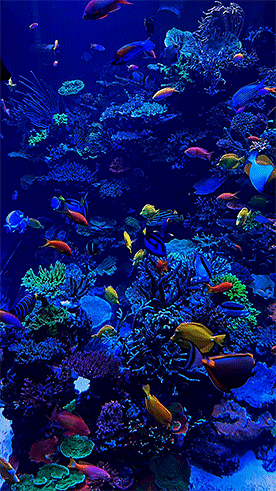

polo_reef on ig
#underwater#fish#stim#sensory#satisfying#mypost#mygifs#aquarium#reef#blue#royal blue#blacklight#coral reef#hands free#handsfree#tropical
19K notes
·
View notes
Note
i love you aroallo people i love you pan people i love you bi people i love you nonbinary people i love you lesbians i love you trans women i love you intersex people i love you everyone in every body or identity with discourse surrounding if you should exist or not i love you so much i love you i love you i love you. you are so so loved i promise you
a very tired but hopeful trans lesbian 🙏
String identified: aa a a a ta t tt t c g t t c . a
a t t ta a 🙏
Closest match: Sepioteuthis lessoniana genome assembly, chromosome: 33 Common name: Bigfin Reef Squid
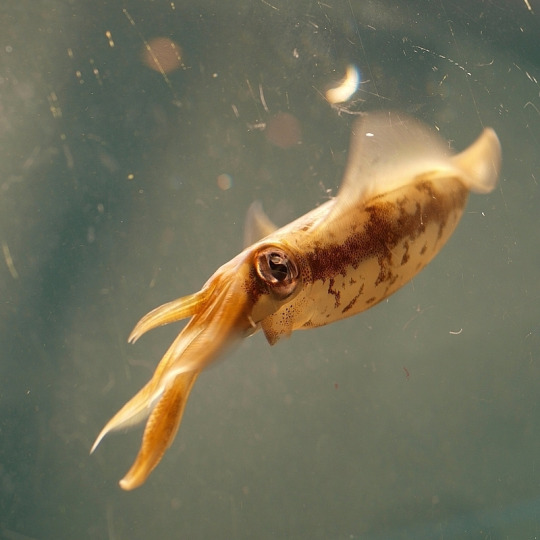
#tumblr genetics#genetics#asks#requests#sent to me#transgender#fish#ocean#squids#bigfin reef squid#things will get better anon#<3
11K notes
·
View notes
Text
Since Percy can talk to sea creatures, I'd like to think that one day he passed a pet shop with all these fish screaming at him in agony. Since then there has been a giant aquarium in cabin 3 with fish. He converses with them daily when he's at camp. He gave them all names (they were delighted to hear his suggestions).
There is one grumpy grouch that always tries to eat as much food before all the other fish. He has to keep him forcibly apart in a tiny water ball during dinner. He named him Zeus. Percy doesn't give a shit. Poseidon knows and thinks it is hilarious.
Chiron, who takes care of them when Percy's gone, cannot understand them but he doesn't like the way they look so judgemental. They are very much gossiping about him to his face.
#pjo tv show#pjo fandom#pjo series#percy jackson#percy jackon and the olympians#headcanon#i also like to think that wild creatures also want to have a name so when he's just chilling in the sea there are random fish coming to him#brutus the coral reef overlord#which is a guppy
7K notes
·
View notes
Note
cutest shark facts?


Nurse sharks and white tip reef sharks form a pile and cuddle!
It's believed to be a form of social bonding and has helped challenge the "lone shark" assumption, allowing us to learn more about shark ecology and interaction!
#marine biology#marine ecology#animals#science#biology#animal facts#wildlife#marine life#ocean#fun facts#fish#shark#sharks#nurse shark#white tip reef shark#cute#cute facts#cute animals
3K notes
·
View notes
Text

Off the Coast of Georgia, Marine Life Colonizes Two MARTA Railcars
1K notes
·
View notes
Text
the fact that I will never truly know what it’s like to be a shark in a shark cuddle pile is cruel and unusual punishment.


absolutely devastating.
#me with my mutuals#but fr that should be me!!! get me in there!!!#white tipped reef shark#sharks#cuddle pile#shark cuddle pile#cartilaginous fish#fish#marine biology#marine bio#marine biology memes#fish memes#there are many benefits to being a marine biologist#i love fish#bio#biology#biology meme#science#ocean lover#ocean#shark lover#fish lover#meme#love#friends#btw gang we’re at like. almost 900 followers. what#I know a good chunk of them are bots but. thank u! :.)#post
7K notes
·
View notes
Text
Движемся навстречу солнцу с элегантным скатом (Обыкновенный пятнистый орляк). Moving towards the sun with an elegant eagle spotted stingray.
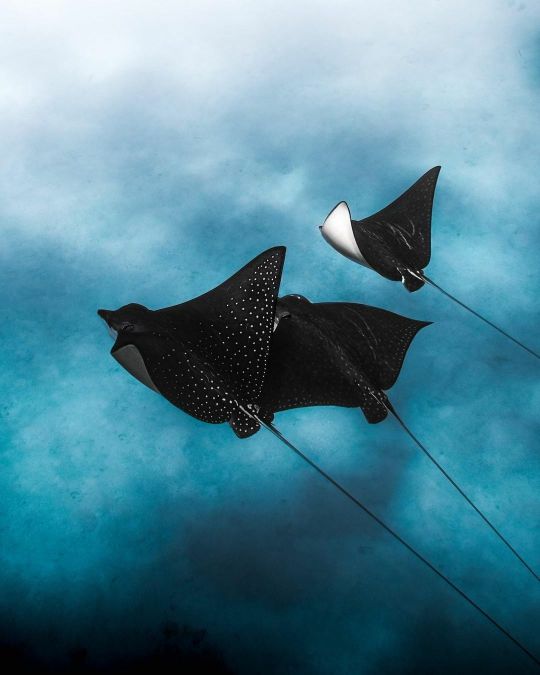
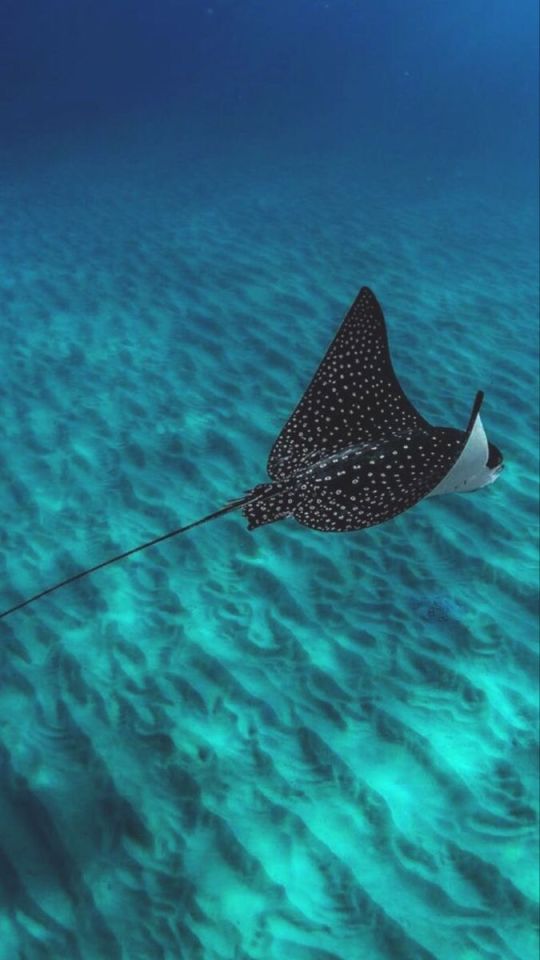
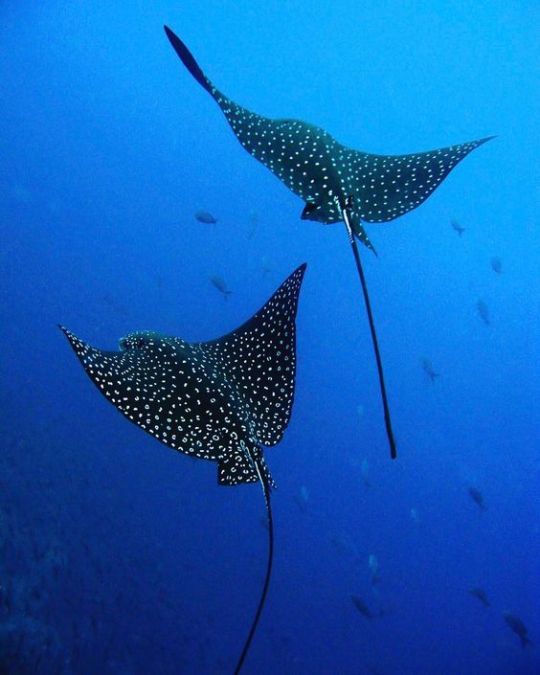
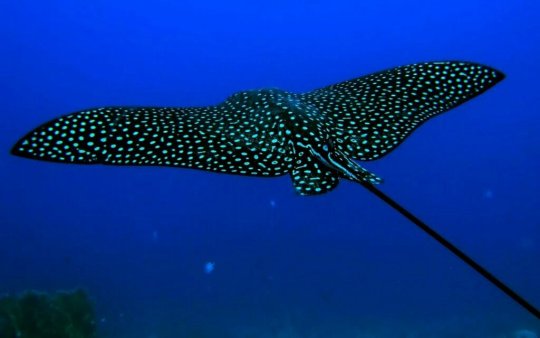
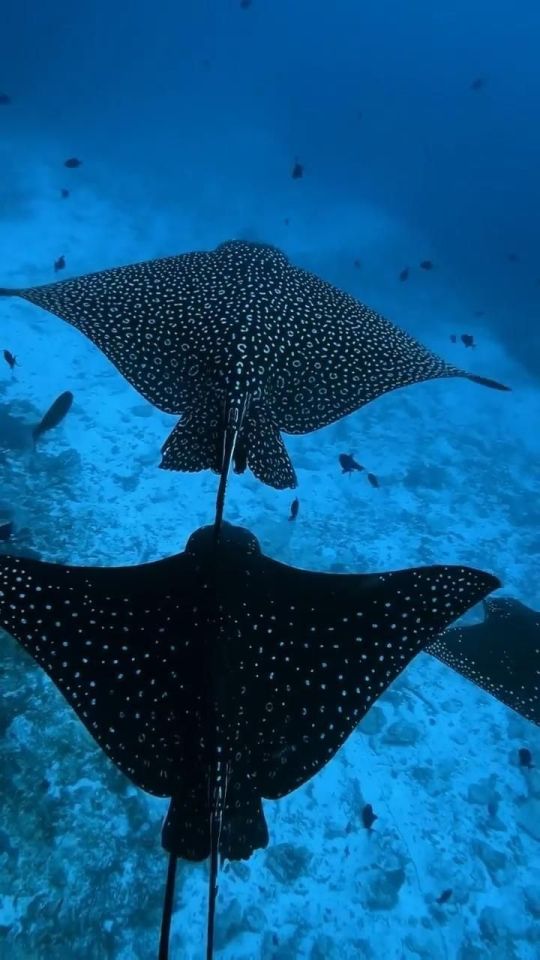
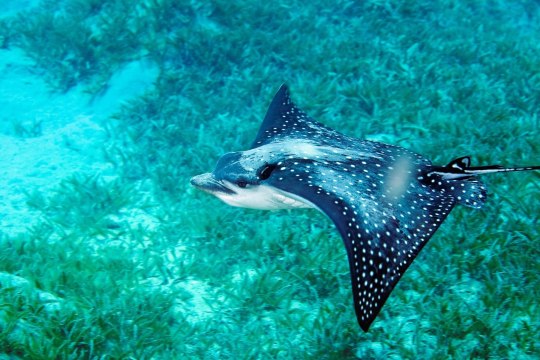
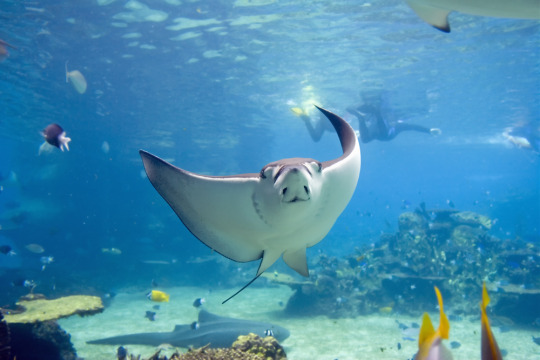
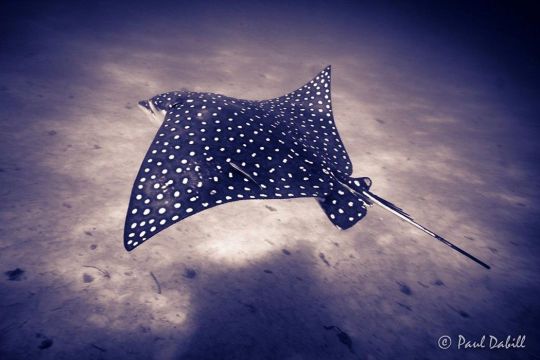
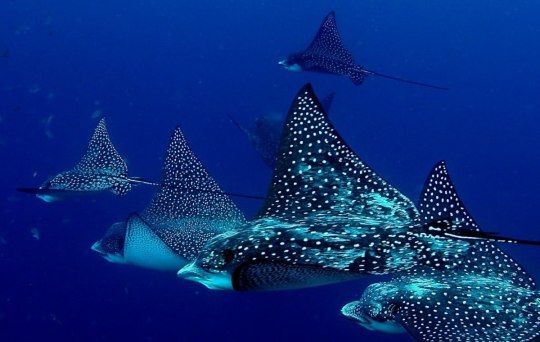

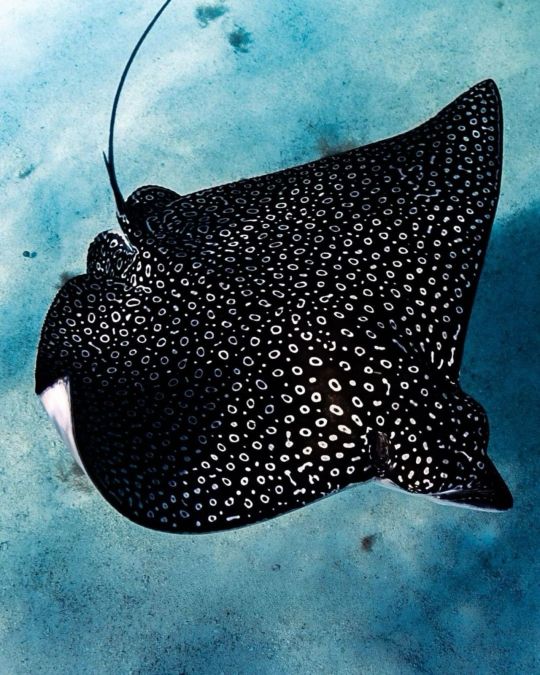
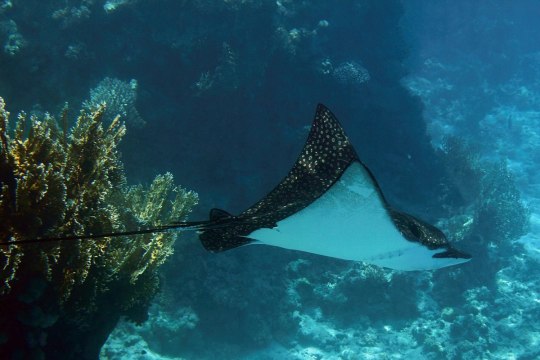
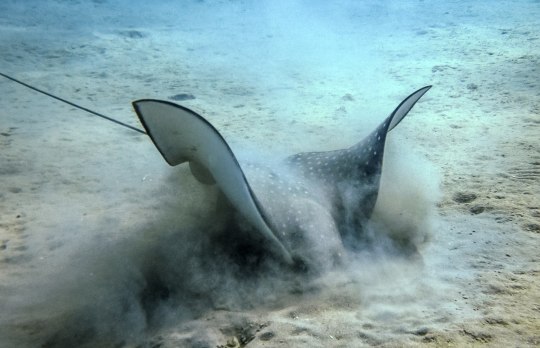
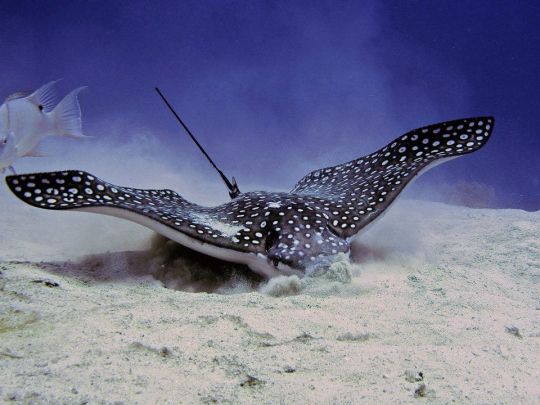
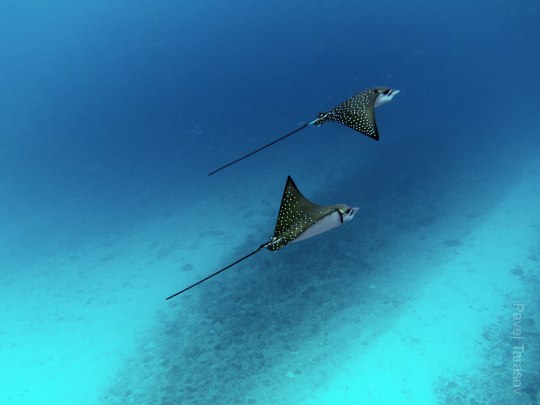
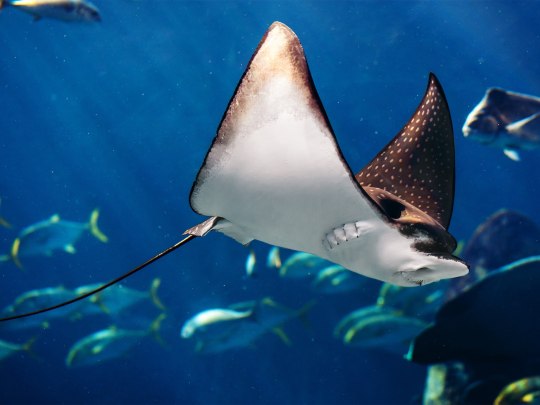
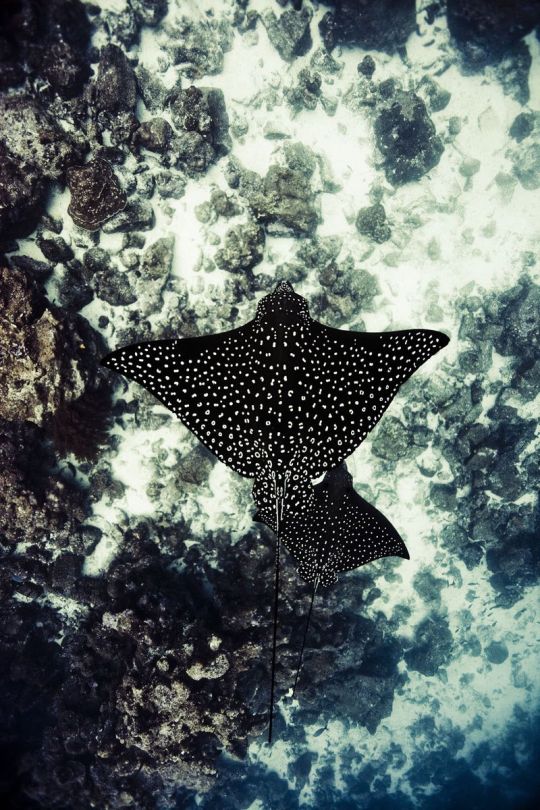
Обыкновенный пятнистый орляк (Аetobatus narinari).
Это — вид хрящевых рыб одноимённого рода семейства орляковых скатов. Пятнистый орляк принадлежит к роду Aetobatus, его видовое название можно перевести, как «орел–скат». Это скат крупных размеров (до 8,8 м с хвостом), у которого максимальный размах плавников-крыльев может доходить до 330 см, толщина тела в районе головы – 50 см, а вес до 230 кг. Скат орляк похож на парящую под водой хищную птицу -- не зря он получил свое название. Движения его плавников похожи на взмахи крыльев, нос на птичий клюв. Спинная поверхность орляка окрашена в темно-синий или чёрный цвет с белыми точками, брюшная сторона — белая. Хвост длиннее, чем у других скатов, и несёт на себе 2—6 ядовитых шипов.
Широко распространён в тропической зоне, включая Мексиканский залив, Гавайские острова, вдоль побережья западной Африки, в Индийском океане, Океании и вдоль обоих побережий Америки на глубине до 80 м. Обычно ведет одиночный образ жизни, но вне сезона размножения может образовывать крупные стаи. В дикой природе , если пятнистого орляка не трогать , то это животное неопасно и пугливо. Но , если , нечайно наступить на пятнистый орляк , то он обвивает ногу хвостом, наступившего на рыбу пловца , или рыбака и вонзает ядовитые шипы.Часто люди получают рваные раны, которые необходимо промыть и лечить.
Пятнистый орляк имеет охранный статус на Большом Барьерном рифе вдоль восточного побережья Австралии.
Eagle spotted stingray(Aetobatus narinari).
It is a species of cartilaginous fish of the eponymous genus of the eagle ray family. The eagle spotted stingray belongs to the genus Aetobatus, its specific name can be translated as "eagle–stingray". This is a large-sized stingray (up to 8.8 m with a tail), whose maximum wingspan can reach 330 cm, body thickness in the head area is 50 cm, and weight is up to 230 kg. The eagle stingray looks like a floating chi under watera bird of prey -- it got its name for a reason. The movements of its fins are similar to the flapping of wings, its nose is like a bird's beak. The dorsal surface of the eaglet is colored dark blue or black with white dots, the ventral side is white. The tail is longer than that of other stingrays and carries 2-6 poisonous spikes.
It is widespread in the tropical zone, including the Gulf of Mexico, the Hawaiian Islands, along the coast of West Africa, in the Indian Ocean, Oceania and along both coasts of America at depths up to 80 m. It usually leads a solitary lifestyle, but outside the breeding season it can form large flocks. In the wild, if the eagle spotted stingray is not touched, then this animal is harmless and timid. But if you step on a eagle stingray, it wraps its tail around the leg of a swimmer or fisherman who stepped on a fish and pierces poisonous thorns.People often get lacerations that need to be washed and treated.
The eagle spotted stingray has a protected status on the Great Barrier Reef along the east coast of Australia.
Источник://seaforum.aqualogo.ru/topic/59066-обыкновенный-пятнист%C2%AD%C2%ADый-орляк-аetobatus-narinari/, /ru.wikipedia.org/wiki/Обыкновенныйпятнистыйорляк, pofoto.club/29020-obyknovennyj-pjatnistyj-orljak.html, ru.pinterest.com/pin/985231163169913/,t.me/+HLoqW4OcT5VjZjM6.
#fauna#video#animal video#marine life#marine biology#nature#aquatic animals#sea creatures#ocean#sea#fish#eagle spotted stingray#reef#sand#seaweed#beautiful#animal photography#nature aesthetic#видео#фауна#природнаякрасота#природа#океан#море#скат#пятнистый орляк#рыбы#песок#риф#водоросли
722 notes
·
View notes
Text

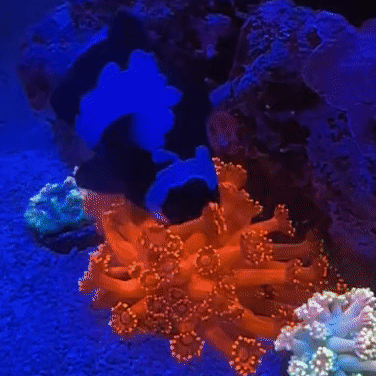


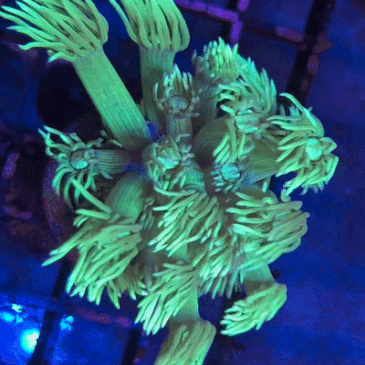




🌈🪸 ~ Ode to Goniopora Coral ~ 🪸🌈
❤️..🧡..💛||💚..💚..🩵||💙..💜..🩷
#stimboard#rainbow#neon#blacklight#black light#coral#coral reef#fish#oceancore#goniopora#rainbow stimboard#rainbow stim#neon stim#neoncore#stim#ocean#ocean stim#rainbowcore#coral reefs#marine animals#marine life#sea creatures#seacore#teal stim#coral stim#ocean coral#coral sea#corals#cool stuff#aliencore
1K notes
·
View notes
Text
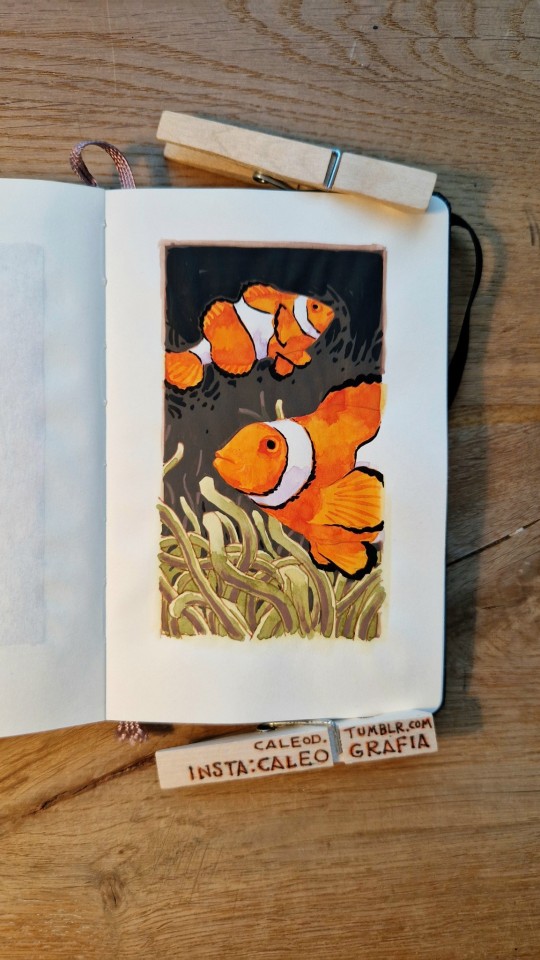
2-6-24
#moleskine#sketchbook#sketch#daily#dailyart#dailydrawing#dailypainting#dailysketch#sketchaday#artoftheday#art#artbook#artists on tumblr#watercolor#gouache#painting#clownfish#fish#animal#anemone#reef#ocean#orange
682 notes
·
View notes
Text
The Achilles tang, Acanthurus achilles, which is also known as the redtail or redspot surgeonfish, is but one of the many surgeonfish or acanthurid species that dwell on the tropical reef, and nearby in reef associated habitats. Specifically the Achilles tang has quite a broad Pacific distribution, within which it is found on the seaward side of coral reefs in crystal clear, turbulent water, strongly affected by wave action. Contrary to much information that is aimed at aquarists, this species naturally congregates in conspecific groups. A large member of A. achilles may be up to 24 centimeters or nearly 10 inches long, but much more commonly they are a little smaller, reaching 20 centimeters or 8 inches long.
Despite being sought after by aquarists, A. achilles are often injured by improper handling during capture methods. Such treatment is not only stressful, but also ultimately lethal in many cases. As a result this species has gained a reputation as very difficult to care for, although care by retailers and home aquarists, is not the source of their delayed mortalities. Other than the effects of poor ethics and maltreatment, the only cautions surrounding A. achilles, are the usual caveats with acanthurid fishes, or those organisms from seaward reefs with pristine water. Acanthurids are susceptible, as a group, to attack by the burrowing, unicellular endoparasites that are responsible for white spot and velvet diseases, and treating these maladies in the presence of corals can be problematic.
Acanthurids, the group of fishes also known as surgeonfishes or tangs, are among the important algivorous fishes found in shallow, tropical seas. Other than a few ecological outliers,the acanthurids, and their closest relatives, are either browsers or grazers, and the species naturally vary as to how strictly vegetarian they actually are. A technique called DNA barcoding has identified A. achilles as strictly herbivorous in the wild, and together with existing field observations of their feeding, and comparisons of the shape of their teeth, it is confirmed that this species are best categorized as vegetarian browsers.
The habit of browsing fishes is to nip at fleshy or foliate organisms, which invites analogy with land organisms. Browsing land animals such as deer and giraffes, are those that selectively take advantage of food growing high up, whereas grazers such as zebra, wildebeest, and buffalo crop less discriminately at food very close to the substrate. In the sea, not only plant life but sessile animals are aptly described as subject to grazing and browsing 'predation'. Naturally it is grazing fish that are more likely to damage small polyps, and those colonies with encrusting or plate forming habits, either deliberately or incidentally. Whilst browsers will more likely assail sessile organisms that are fleshy or possess a frondose growth.
Of course A. achilles, being a strict herbivore, is browsing on macroalgae with a frondose or fleshy growth habit, rather than feeding on filamentous algae or microalgae, as some other, often related fish prefer. This species specifically nips at fleshy macroalgae in the wild, and I have heard anecdotes that they can attack Tridacna sp. mantles, which are as fleshy as their natural diet. However A. achilles have no inclination to attack the prized Acropora corals, which share similar requirements to A. achilles regarding water parameters. I would not trust them entirely with any corals bearing a fleshy appearance, but A. achilles is one of the most coral friendly of the Acanthurus species.
In the aquarium A. achilles should be fed mainly on marine vegetables. Acanthurids will also accept prepared foods rich in Spirulina, and vegetables such as courgette or blanched, dark lettuce. As active fish, A. achilles require swimming space, and in reflection of their origins, they need to live in clear and oxygenated water. Although A. achilles has a reputation as extremely aggressive, it does not seem exceptional. Confrontations are usually limited to other acanthurids, and the related siganid species. It would seem that the personalities of individual fishes in this group determine their aggression. Despite naysayers, I have seen more than one mature A. achilles, of similar size, sharing a large aquarium with similar fishes.
Acanthurids obtain their name of 'thorntails' and their vernacular name of surgeonfishes, from the sharp, retractable blades that Acanthurus sp. and its close allies possess. This distinguishes acanthurids from the idols and siganids that do not possess them, and those of basal acanthurids are not foldable. These switchblades on their tails are modified, weaponized scales that can injure a human handler, and damage nets. It is not yet known wether these blades are toxic, but it is strongly suspected that they are in at least some acanthurid species. Either way, it is the presence of these fighting instruments that makes aggression by acanthurids a potential, sometimes deadly problem in the aquarium.
0 notes
Text

planning a big order with my manufacturer before tariffs hit me next year 🥲 on the plus side for you this means a new lanyard design inspired by species at different ocean depths!! always love drawing a good garibaldi fish. perfect shape perfect creature
#so many guys in this one idk where to start#sea turtle#reef shark#sea star#anglerfish#comb jelly#squid#lantern fish#swordfish#sea krait#coelacanth#eel#tuna#garibaldi fish#cownose ray#dolphin#parrotfish#marine biology#my art#digital art
397 notes
·
View notes
Text
Dandelion News - September 15-21
Like these weekly compilations? Tip me at $kaybarr1735 or check out my new(ly repurposed) Patreon!
1. A beam of hope for North America’s most endangered sparrow

“Dozens of conservationists, gathered some distance away to avoid spooking the skittish sparrows, celebrated the [release of the 1000th captive-raised sparrow] in an unprecedented recovery program that in only a few years has doubled the bird’s wild population, from a mere 80 five years ago to some 200 today. […] “What we have achieved is the best case scenario.””
2. U.S. overdose deaths plummet, saving thousands of lives

“"In the states that have the most rapid data collection systems, we’re seeing declines of twenty percent, thirty percent," said Dr. Nabarun Dasgupta, an expert on street drugs at the University of North Carolina. […] According to Donaldson, many people using fentanyl now carry naloxone, a medication that reverses most opioid overdoses. He said his friends also use street drugs with others nearby, ready to offer aid and support when overdoses occur.”
3. Propagated corals reveal increased resistance to bleaching across the Caribbean during the fatal heat wave of 2023

“”[… Y]oung corals bred for restoration are a lot more resistant to bleaching under extreme levels of heat stress than the prevailing corals on the reef." [… Unlike with the previous propagation strategy, fragmentation, e]very time a population reproduces, new offspring receive newly mixed sets of genes through recombination, making them different from their parent colonies and thus enabling adaptation.”
4. Habitat Management Helps At-Risk Butterflies
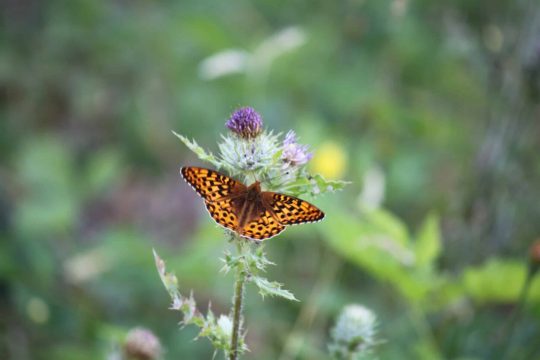
“For a number of at-risk butterflies in the United States, habitat management can play an important role in keeping them from going extinct. [… “In] places where people are actively engaged with ways to manage the habitat, the butterflies are doing the best,” said Cheryl Schultz, a professor of conservation biology at Washington State University[….]”
5. Study: Protecting the ocean helps fight malnutrition
“[The study] found that fish catches in coral reefs could increase by up to 20 percent by expanding sustainable-use marine protected areas — that is, areas where some fishing is allowed with restrictions[, … and] that sustainable-use marine protected areas have on average 15 percent more fish biomass than non-protected areas. […] “Allowing regulated fishing in marine protected areas can support healthy fish populations, while also having a positive impact on the quality of life of surrounding communities.””
6. [FWS] Advances Effort to Create Urban Conservation Footprint in Tucson
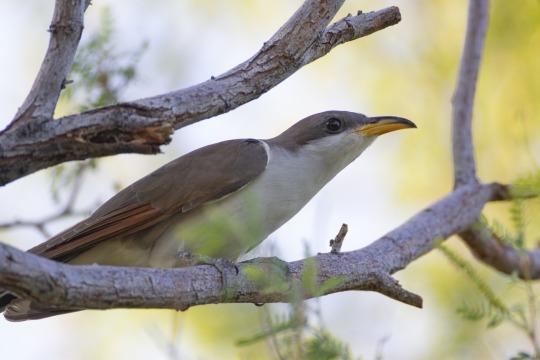
““We want to continue to work together to create an urban footprint to improve access to nature, conserve habitats, and improve air and water quality.” […] The area provides habitat for several federally listed species, including southwestern willow flycatcher, western yellow-billed cuckoo, and Mexican garter snake. If protected, the area will also help connect critical habitat for jaguar and Chiracahua leopard frog.”
7. ‘Exciting’ solar breakthrough means energy can be kept in sustainable batteries that don’t overheat

“The technology is based on a specially designed molecule of carbon, hydrogen and nitrogen that changes shape when it comes into contact with sunlight. These are common elements - providing an alternative to other technologies relying on scarce materials like lithium. […] A unique feature of the system is that the molecules also provide cooling in the photovoltaic cell[, which can store solar energy “for up to 18 years.”]”
8. Sea turtles make big comeback on sandy beaches at 2 British military bases in Cyprus

“[… The] number of nests surpass[ed] last year’s record count by nearly 25%, environmentalists said Tuesday. […] “The steep increase in turtle nests has been the result of a consistent, systematic ‘hands-off’ approach, together with enforcement efforts to minimize illegal, damaging activities on nesting beaches[….” D]aily patrols by volunteers ensure that aluminum cages set atop the nests remain in place to protect the turtles from predators like foxes and dogs.”
9. First ever photograph of rare bird species New Britain Goshawk
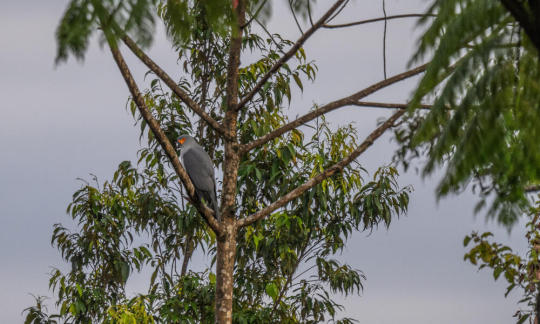
“The last documented scientific record of the bird is from 1969[….] Working closely with [“the Indigenous Mengen and Mamusi peoples”], WWF hopes to support local stewardship to safeguard the future of these incredible biodiversity hotspots through community-led conservation.”
10. Hospitals begin offering breakthrough radiation therapy for metastatic cancer tumors

“[First,] a patient is injected with a radioactive glucose (or sugar) tracer. The machine picks up the tracer in real time and in bright colors, [… then] reads a signal from the cancer cells breaking down the tracer. [… “The] machine is automatically and autonomously reacting and responding to those signals by shooting radiation back to their source[….]””
September 8-14 news here | (all credit for images and written material can be found at the source linked; I don’t claim credit for anything but curating.)
#hopepunk#good news#birds#endangered#endangered species#conservation#tw drugs#drugs#naloxone#coral#coral reef#coral bleaching#mexico#united states#vermont#butterflies#habitat#fish#malnutrition#fishing#food insecurity#arizona#nature#solar#solar energy#solar power#turtles#sea turtle#cancer#medicine
310 notes
·
View notes
Text



🌊🐠 Ocean 🐠🌊
Ko-fi - Inprnt - Patreon
Old vs new under the cut -

#myart#traditional art#folktale#illustration#art#ocean#sea creature#underwater#fish#reef#sea lady#water lady#water spirit#starfish#posca pen#white gel pen#muse watercolor paper#salt#waves#teal waves#blue sea#whatever#old one is 2020 btw#it was very low effort#anilinky#watercolor illustration#oc#id in alt
387 notes
·
View notes
Text







I made fish
(I’m a big fan of fish)
169 notes
·
View notes